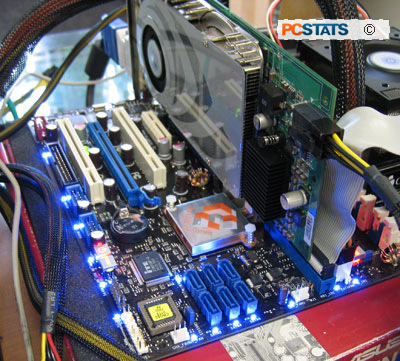 |
| Overclocking Results: |
|
|
Early generation nForce 590 SLI motherboards have been
overclocking quite well, if you remember back to the nForce4 era it was the
later generations of chipsets that hit really high speeds. For whatever reason,
in that case earlier silicon could only reach moderate levels.
Before the overclocking began though, the AMD Athlon64 X2-5000+ CPU clock multiplier was first
set to 8x, the Corsair Twin2X2048-8500 memory frequency to run in 533 MHz
mode. This way neither the processor or memory will hold the Asus M2-CROSSHAIR
motherboard back from achieving its top speeds.
 Starting at 200
MHz, the Asus M2-CROSSHAIR motherboard clock speed was increased in 5-10 MHz
increments.
Starting at 200
MHz, the Asus M2-CROSSHAIR motherboard clock speed was increased in 5-10 MHz
increments.
Right from the get go the M2-CROSSHAIR was definitely up
to the overclocking challenge and it didn't give us any problems until 250 MHz.
At this speed the increased HyperTransport bus started
to cause the system to BSOD while loading WindowsXP, lowering the multiplier
from 5x to 4x solved that issue.
Continuing, the Asus M2-CROSSHAIR again started to show
signs of instability at 265 MHz. A slight chipset voltage increase was necessary
(to 1.3V) to stabilize things. The M2-CROSSHAIR easily cracked the 274 MHz the
Foxconn C51XEM2AA was limited to, but at 280 MHz the chipset voltage had to be
increased again, this time to 1.35V.
With that high a chipset voltage, the chipset/MOSFET
heatsink got quite hot and so we doubled up on fans blowing in that general
direction. The Asus M2-CROSSHAIR easily cracked the 300 MHz barrier and we
settled on 325 MHz in the end.
Anything higher than 325MHz caused the motherboard to
crash while running benchmarks, but this is still a very respectable figure.
Certainly nothing to scoff at.
So not only does the Asus M2-CROSSHAIR have the looks,
it's also got the talent to match!
